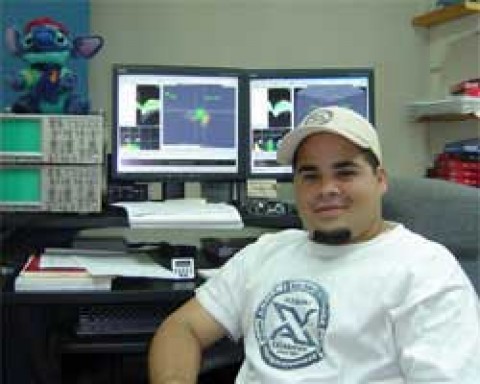Iván Vidal González: Research

Prepared by Iván's advisor, Dr. Gregory Quirk
Approximately 40 million Americans suffer from fear and anxiety disorders that could get worse if untreated. Research in the Quirk Lab focuses on the neural circuits in an animal model of fear and anxiety disorders. This research approach begins with a phenomenon known as Pavlovian Fear Conditioning where a rat is presented with a tone that is paired with a mild footshock. The rat learns the association between these two events. When the tone is later presented without the shock, the rat will still display a variety of fear responses, such as freezing. With repeated presentations of the tone without shock, the fear responses will decrease, or extinguish. Work in the Quirk Lab has focused on the role of a particular brain structure ñ the medial prefrontal cortex (mPFC) ñ in extinction processes. Iván's research had two major goals: understanding how individual neurons in mPFC change their activity as a result of fear learning and extinction, and how stimulation of various areas within the mPFC affects fear responses.
One of Iván's studies was achieved by placing a stimulating electrode into different areas of the mPFC. While training his brother Benjamín Vidal-Gonzalez, he found that stimulating one group of cells increased fear responses and decreased extinction learning, whereas stimulating another group of cells gave the opposite pattern of effects. The human mPFC contains structures that are similar to the regions that Iván stimulated in rats. Iván's work was ultimately aimed at understanding the role of mPFC in clinical disorders of fear and anxiety in humans. Patients suffering from post-traumatic stress disorder (PTSD), for example, show decreased activity in fear-inhibiting regions of the mPFC. Iván hypothesized that humans suffering from anxiety disorders could receive transcranial magnetic stimulation to help reduce their fear problems.







